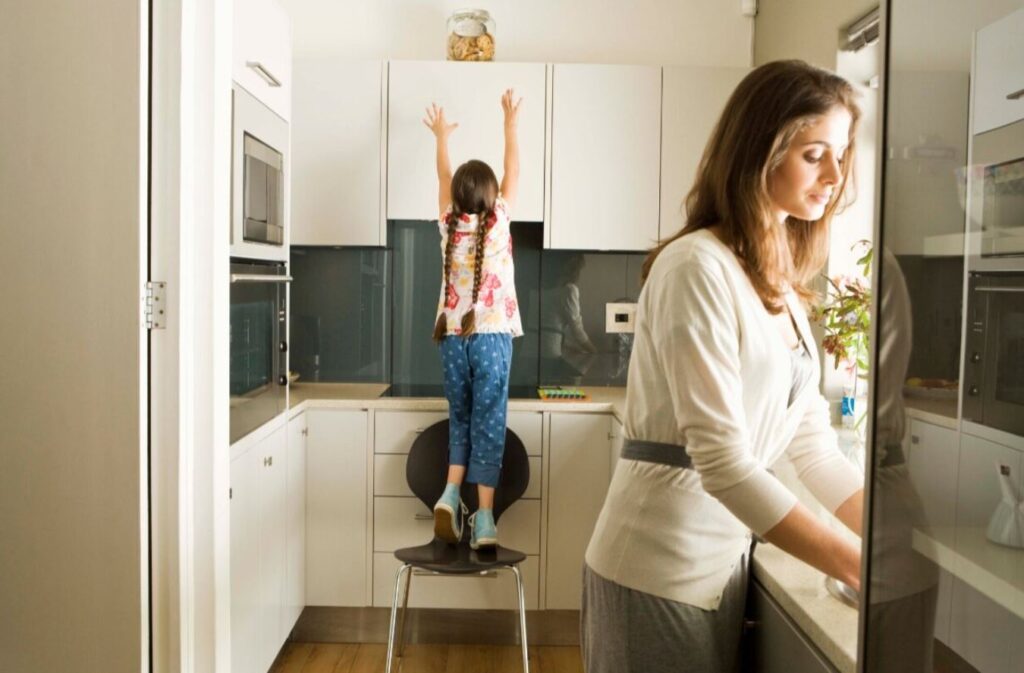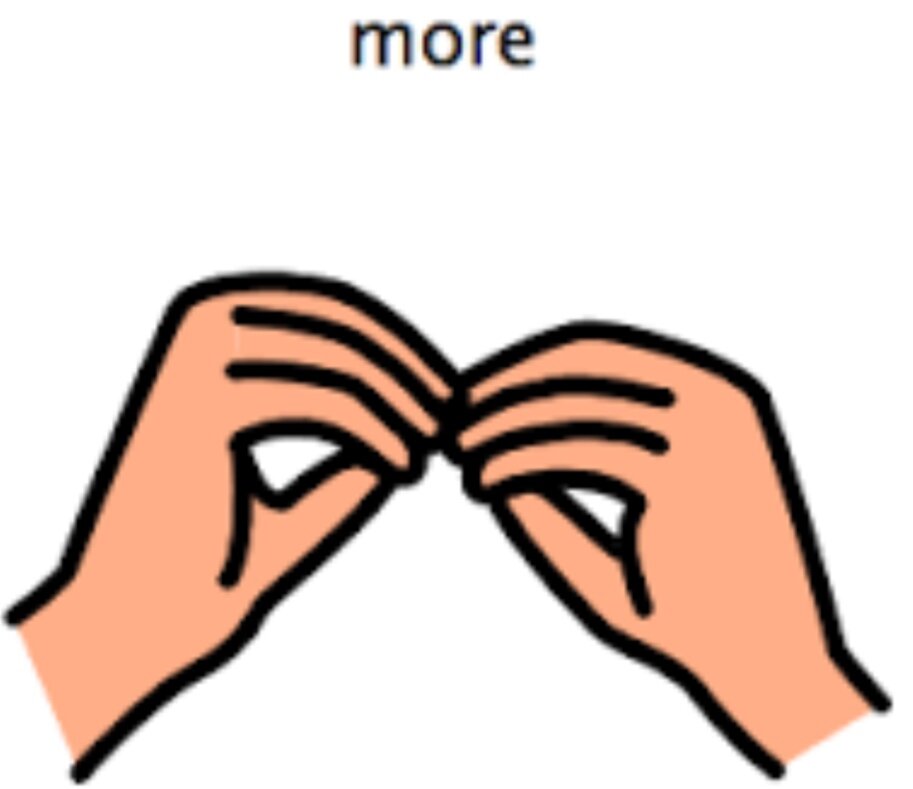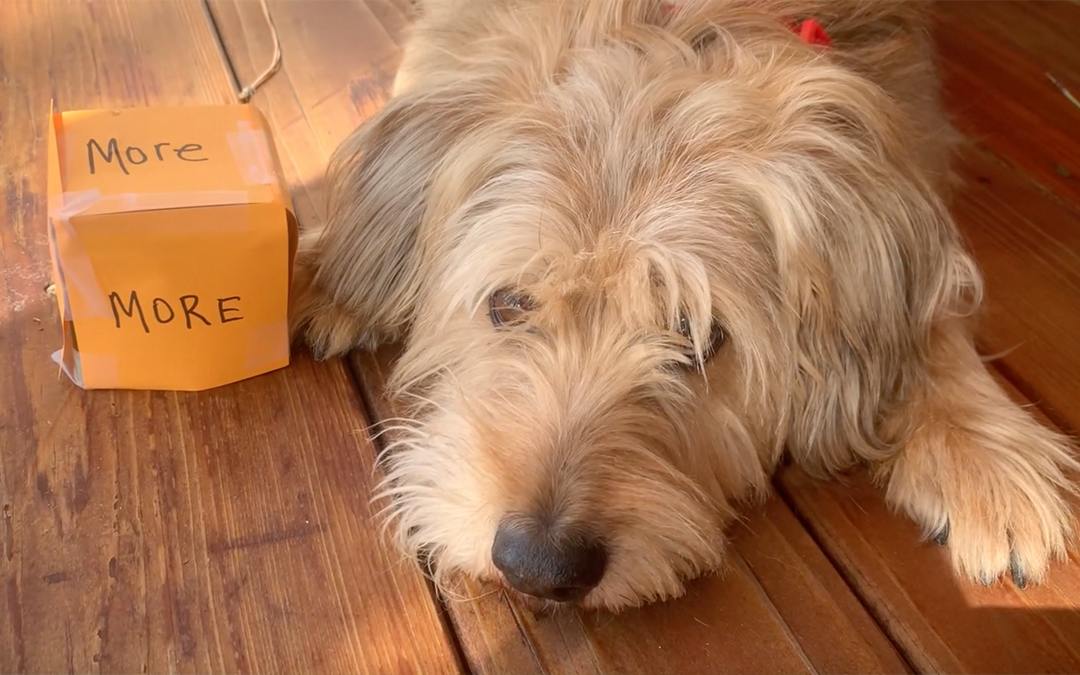Teaching more
A child’s first attempts to communicate is usually a request in order to satisfy a want or need. In the beginning stages of language this is normally done through the use of gestures (pointing, eye contact, pulling) and vocalizations. If your child is unsuccessful in expressing their wants or needs they may, and often resort to cries, tantrums, hitting or try to independently obtain objects themselves. When we experience undesirable behaviors, it is not because your child is trying to be “bad,” they just need some help stating they want something.
Put yourself in their shoes, let’s pretend you’re in a room of people that speak a different language. You are thirsty and want a glass of water that is on a counter and out of reach. How would you get it? Perhaps you would point or reach for it? What if no one is responding to help you. Next you may make a noise or try to get it yourself. You’re still unsuccessful and you’re getting worried you may not get what you want. Perhaps you have exhausted all of your resources and now you’re feeling frustrated, helpless, and thirsty. Maybe you’ll start to cry out with more intensity. This is what your child is doing. Your child needs help. They don’t know what to say. They are trying harder and harder to communicate in order to fulfill a need. When this occurs, using the “more” sign will help your child illustrate they want something.

Why use the word more?
The sign for more is effective because it’s easy. “More” requires little motor movement. It is a simple sign that you can physically show them how to produce. The sign is performed by touching opposing finger tips together. It is similar to clapping. If your child can clap or place their hands at their midline they can produce the sign for more. Teaching the sign “more” gives children a general blanket statement to request for something. It gives them a word with meaning to replace their gestures and vocalizations. They learn that they can produce a word/sign and then receive an item which will help them eliminate grabbing, screaming, independent climbing etc. As they are using the sign, they are also learning about the functionality of language and how it has a cause and effect relationship.
“More” is a highly recognized sign by caregivers, school and daycare settings. It also increases pragmatic skills such as turn taking, eye contact, and helps eliminate non-desired behaviors such as tantrums. The sign can be used whenever your child is requesting for something (whether they are asking for the first time or not!) This sign can be generalized into all of their daily routines; such as requesting a toy, putting on shoes, asking for food, going outside etc., We can use “more” whenever we want something.
We are not teaching sign language. As soon as the child masters the sign for “more” over 85% of the time, we begin to introduce the “m” or “muh” sound to go with it. Ultimately the goal is to drop the sign all together. However, it may be necessary to revisit the sign during times of high frustration.

Steps on teaching more.
When teaching the sign for more, it’s important to do it in a controlled situation. Try to have objects that you know your child wants so you do not have to guess. This creates a healthy environment that will enable to you to eliminate any unnecessary frustration that may leave you guessing what the request is. If a child is already crying it is much harder to introduce the sign. When teaching the sign, keep control of the object and then give it to them piece by piece. For example, if they wanted pretzels, instead of giving them the whole bag give them a few pieces and let them request for more. If you’re playing a puzzle game then give them one puzzle piece at a time.
1. Present objects to the child and wait for a response.
2. If your child starts reaching for an object, label the object, and verbalize your thought pattern. “your reaching for a cookie. You must want some. Let’s practice asking. We can say more”
3. Demonstrate the sign for more. Then show the child how to do it by doing it for them hand-over-hand.
4. As soon as you provide hand-over-hand modeling – reward the child with the item. It may be necessary model this for a frequent number of trials.
5. Ultimately your child should begin to do it on their own. Keep reminding them. If you see them getting confused or frustrated resort to hand-over-hand.
6. Repeat – Repeat – Repeat!
Tips
1. Your child must be interested in the object they are requesting. Your child wont request if they don’t want it.
2. Give your child time. Don’t ask your child if they want more or tell them to say more until they make some sort of attempt for the object.
3. Before you give a child, an object have them say more. You may say it for them using hand-over-hand. It is important your child experiences the cause and effect relationship that the word “more” was what gave them their desired object. We want children to realize that non-desirable behaviors are ineffective and it was the word that worked!
4. Stick to the objective! If you child says “more” give them the item. Don’t add anymore demands, such as “now say please.”
What if my child knows the sign for more but continues to cry when he is asking outside of controlled situation? If your child is very upset, it may be necessary to calm them down or remove them from the room in order to calm down. However, the great thing about more is you can do it for them; hand-over-hand. We want to illustrate that it was the sign that you responded to not the non-desirable actions.
What if my child asks for more but they aren’t allowed to have it? This happens! We all know your child can’t get everything they ask for. During these times let them know you heard them so they do not feel ignored then explain the reasons why they cannot have the item. If possible, try to offer an alternative. It may be necessary to give them time to calm down or remove them from the room.


